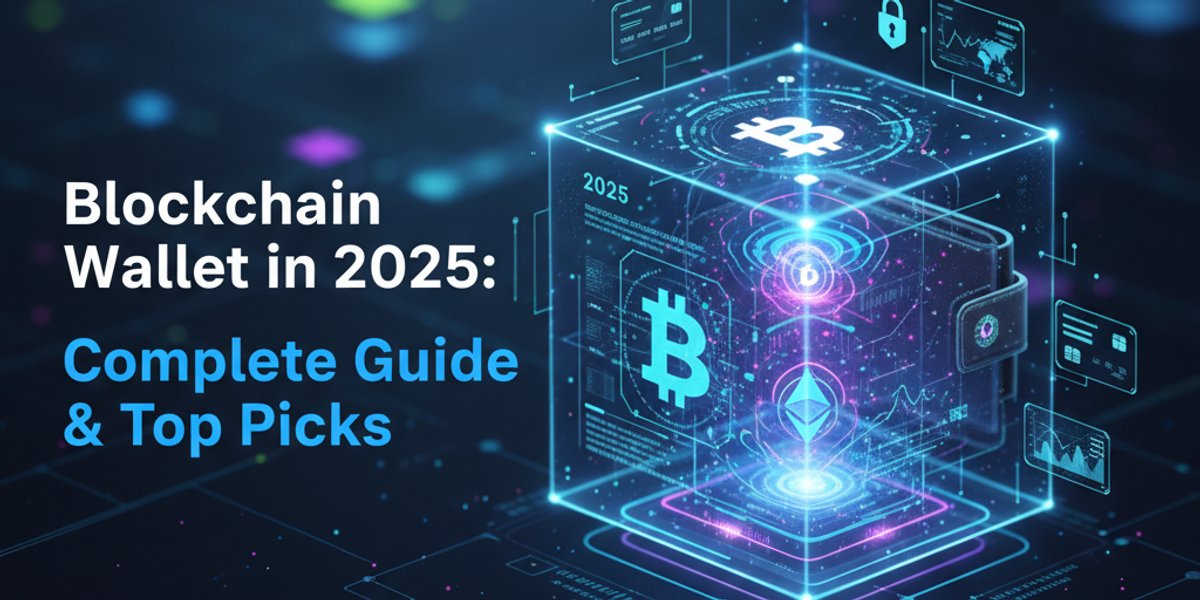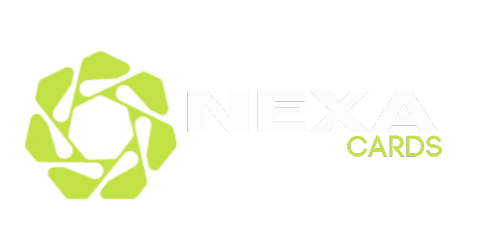
Blockchain Wallet in 2025: Complete Guide & Top Picks
Discover everything about blockchain wallet: features, benefits, best providers, and expert comparisons. Updated for 2025 by Nexa Cards Solutions, Ltd.
Blockchain Wallet in 2025: Complete Guide & Top Picks
Overview
A blockchain wallet is software or hardware that stores the cryptographic keys you need to control funds on a blockchain. Wallets come in two primary shapes: custodial (a third party holds keys) and non-custodial (you hold the private keys). In 2025, users expect wallets to support multiple chains, seamless dApp connections, on-chain identity features, and integrations like crypto debit cards or virtual cards for business spending. The market mix includes browser extensions (MetaMask), mobile apps (Trust Wallet, Exodus), and hardware devices (Ledger, Trezor).nexacards
Key Features to Look For
- Self-custody options — ability to hold your own keys (seed phrase / social / multi-sig).
- Multi-chain support — seamless switches between Ethereum, Bitcoin, Solana, and popular L2s.
- Hardware wallet compatibility — ability to pair with cold storage devices for high-value holdings (Ledger/Trezor).
- Built-in dApp/browser — for NFT marketplaces, DeFi, and web3 login flows.
- Payment integrations — crypto debit cards or virtual cards for business use (makes spending crypto in fiat simpler).
- UX & recovery options — social recovery, seed-shard backups, and user-friendly transaction signing.
- Transparent fees and fiat on/off-ramps — clarity on swap, bridge, and on-ramp costs.
These features determine whether a wallet is suitable for traders, long-term HODLers, or business users needing virtual card functionality.
Pros & Cons (General)
Pros
- •Full control over funds with non-custodial wallets.
- •Access to DeFi, NFTs, and cross-chain apps.
- •Hardware pairing for enterprise or large holders.
Cons
- •Responsibility: losing seed phrase = losing funds.
- •Attack surface from phishing, social engineering, or compromised third-party integrations (even centralized providers have suffered insider breaches in 2025).
- •Fees can be unpredictable when bridging or using congested chains.
Top Providers (2025 — short list & why they matter)
Below are leading wallet options that cover most user needs in 2025. Choose based on whether you prioritize security, UX, or ecosystem compatibility.
- Ledger (hardware) — best for cold storage and security The Ledger Nano family remains a top hardware choice for long-term storage and enterprise use. Hardware wallets isolate private keys offline and pair with Ledger Live for managing accounts and staking.
- MetaMask (extension & mobile) — best for Ethereum and EVM dApps MetaMask continues to dominate Web3 interactions on Ethereum and EVM chains thanks to widespread dApp integrations and developer support. Ideal for DeFi users and NFT collectors.
- Trust Wallet (mobile) — best mobile all-rounder Trust Wallet remains a popular on-phone option supporting many chains, simple swaps, and staking. Good for users wanting one mobile app for diverse tokens.
- Exodus (desktop & mobile) — best UX for retail users Exodus is favored for polished desktop and mobile apps, intuitive portfolio views, and built-in swaps — useful for users who want simplicity without hardware.
- Phantom (Solana) — best for Solana ecosystem If you’re active on Solana, Phantom’s speed, NFT support, and integrations make it the go-to choice.
- Emerging smart-recovery wallets (e.g., Zengo-style/no seed apps) Wallets offering social or key-split recovery can reduce the single-point-failure risk for mainstream users. These are increasingly common for beginners.
(For a deeper dive into feature-specific picks, see our internal roundups: Best crypto wallet, Crypto debit card, and Virtual card for business.)
How It Works — a simple walkthrough
- Create wallet — the app generates a seed phrase (12–24 words) or uses a seedless social recovery method.
- Derive keys — the seed deterministically creates private/public key pairs for different addresses.
- Sign transactions — when you send funds or interact with a dApp, the wallet signs the transaction with your private key. On hardware wallets, signing happens on the device. (
- Broadcast to network — the signed transaction is sent to nodes; miners/validators include it in a block.
- Balance view — wallet queries blockchain state to display balances and tokens.
Understanding this flow clarifies where security risks lie (seed storage, signing prompts, phishing sites).
Fees & Limits
Wallet providers themselves may be free, but using a blockchain involves costs:
- •On-chain gas fees: vary by chain and network congestion (Ethereum gas remains variable; many users use Layer-2s to lower fees).
- •Swap / in-app exchange fees: some wallets route swaps through AMMs or custodial providers — check the quoted rate.
- •Fiat on/off ramps: third-party payment partners charge conversion/processing fees for card/ACH purchases.
- •Hardware wallet price: one-time purchase (e.g., Ledger models); factor this into your security budget.
Always review the transaction preview and any quoted fees before authorizing. Wallets that clearly separate network gas from service fees are preferable.
Security & Trust (must-read in 2025)
2024–2025 saw large incidents that remind users: platform trust ≠ immunity. Centralized platforms experienced data and insider breaches in 2025; attackers increasingly use social engineering and AI-enhanced scams. Non-custodial wallets reduce third-party exposure, but phishing and address-poisoning attacks remain serious threats.
Security checklist:
- •Use hardware wallets for significant holdings; keep seed phrases offline.
- •Verify domain names and dApp origins; never paste seed phrases into websites.
- •Use multi-sig wallets for shared/business funds.
- •Prefer wallets with audit history and open-source components.
- •Keep apps and firmware updated; buy hardware only from official stores.
- •Consider insurance/insured custody for business treasuries.
If a centralized provider is breached, custodial customers may be protected to some degree — but self-custody isolates you from platform failures (and places recovery responsibility on you).
Choosing the Right Wallet: Quick Guide
- •Beginner / small amounts: mobile app with social recovery or simple seed backups (Trust Wallet, Zengo).
- •Active DeFi/NFT user: MetaMask (with hardware wallet for larger positions).
- •Large holdings / long-term saver: hardware wallet (Ledger or Trezor) + passphrase and secure seed storage.
- •Business / treasury: multi-sig solution + virtual card for business spend and clear expense trails (see internal: Virtual card for business).
- •Spend crypto often: wallets integrated with crypto debit cards make fiat conversion straightforward — compare card fees and limits. (Crypto debit card)Nexcards Contact
FAQs
Q: Is a blockchain wallet the same as an exchange wallet?
A: No. Exchange wallets (custodial) store keys for you; non-custodial blockchain wallets give you direct control over private keys.
Q: What happens if I lose my seed phrase?
A: If you lose the only recovery method and have no backup, funds are unrecoverable. Use secure backups or smart recovery options.
Q: Are hardware wallets necessary?
A: For substantial sums, yes. Hardware wallets keep private keys offline and dramatically lower the risk of remote theft.
Q: Can I use one wallet for Bitcoin, Ethereum, and Solana?
A: Many wallets support multiple chains, but some (like Phantom) are optimized for a single ecosystem. Check chain coverage before committing.
Q: How do I reduce fees?
A: Use L2s, schedule transactions during low congestion, or use wallets/options that aggregate cheaper routing for swaps.
Final recommendations
A 2025-ready blockchain wallet balances usability and security. For most users, a two-tier approach is smart: a friendly mobile/extension wallet for daily interactions and a hardware wallet for savings and high-value assets. Keep recovery simple but secure, and pair wallets with good operational practices (phishing awareness, verified purchases, and multi-sig for business funds). Recent breaches underline that even reputable platforms can be targeted — self-custody reduces certain risks but raises others, so education and layered defenses are essential.

